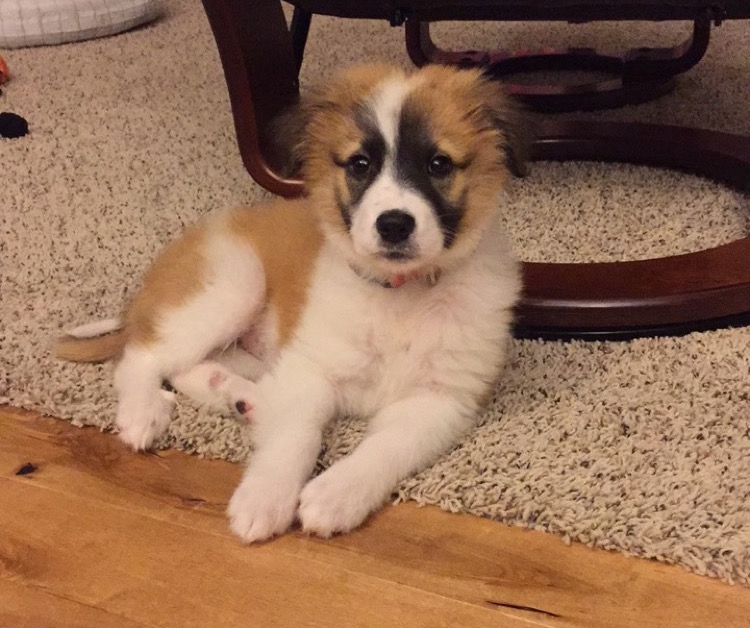Giving a little thought to imprinting and dog love
If you have been keeping up with the Internet lately, you should know that a new puppy has graced my (and Josh’s) life.
Meet Luna

We adopted Luna from Aheinz 57, a local pet rescue. We love our little girl, and you know what? She really loves us.
When we first brought her home, we had a very scared pup on our hands. Luna and her littermates had not been handled by people very much, so she was justified to be a little weary of two humans encroaching on her space.
But within an hour of having her home, I saw that little, curly tail start to wag. The trust was starting to build, and my gosh, a rub on the belly feels pretty good!
I look at this small period of time as one of the most crucial periods a new owner has with her pet. Compare it to imprinting.
For precocial animals (think bird species such as ducks, chickens and turkeys), imprinting comes at a very young age. Filial imprinting, as it is called, happens at a specific interval of time in the baby animal’s life. Researchers have found that it varies, from a range of the first few minutes to the first few hours to even many days into the youngling’s new life.
During this critical period of time, certain stimuli act as releasers for certain innate responses, which allow the baby to imprint on its mother and later in life, determine who it will find attractive when mating.
What’s really interesting about imprinting is that it’s not always the true mother of the baby that gets imprinted upon. A chicken could imprint on a duck. Or a stick. (Yes, it could be an inanimate object!)
Once imprinted on an animal in filial imprinting, it cannot imprint on another animal. No reprinting!
This “molding of the mind” is a sensitive time that sets up the rest of that animal’s life. It determines their attachments and likelihood of survival in the wild.
Let’s open up the narrow window of imprinting and expand the idea to the act of adopting a dog.
When you bring your new best friend home, there is a special “imprinting” time for him to get used to you. To see you as his caretaker—his mother or father. It’s such a crucial period because you are setting the precedent for how highly emotional and scary moments will be handled going forward. You may not realize it, but what you do over the next few hours to few days will shape the level of trust that this dog will have for you. And over the coming months, your every move and decisions will slowly merge into routines for the dog.
Bonding is very important. Can I give you some advice? Shower this dog with love! When we brought Luna home, I tried to hold her a much as I could, just to get more skin-to-skin contact. She stopped being so wiggly in the air and started to look me in the eyes.
It’s this “imprinting” period that will begin your bond with this dog for the next many years.
Little fun fact: why should you wait until eight weeks old to bring home your new puppy? Dogs have a critical period of imprinting from four to eight weeks with their mother. Much of the puppy’s temperament will be determined when it is six to eight weeks old. There is much learning and socialization to happen before eight weeks of age, and this is a crucial “dog learning time” for the pup. His brain will continue to have many key milestones of development through four months of age, which makes the human relationship critical once brought home.